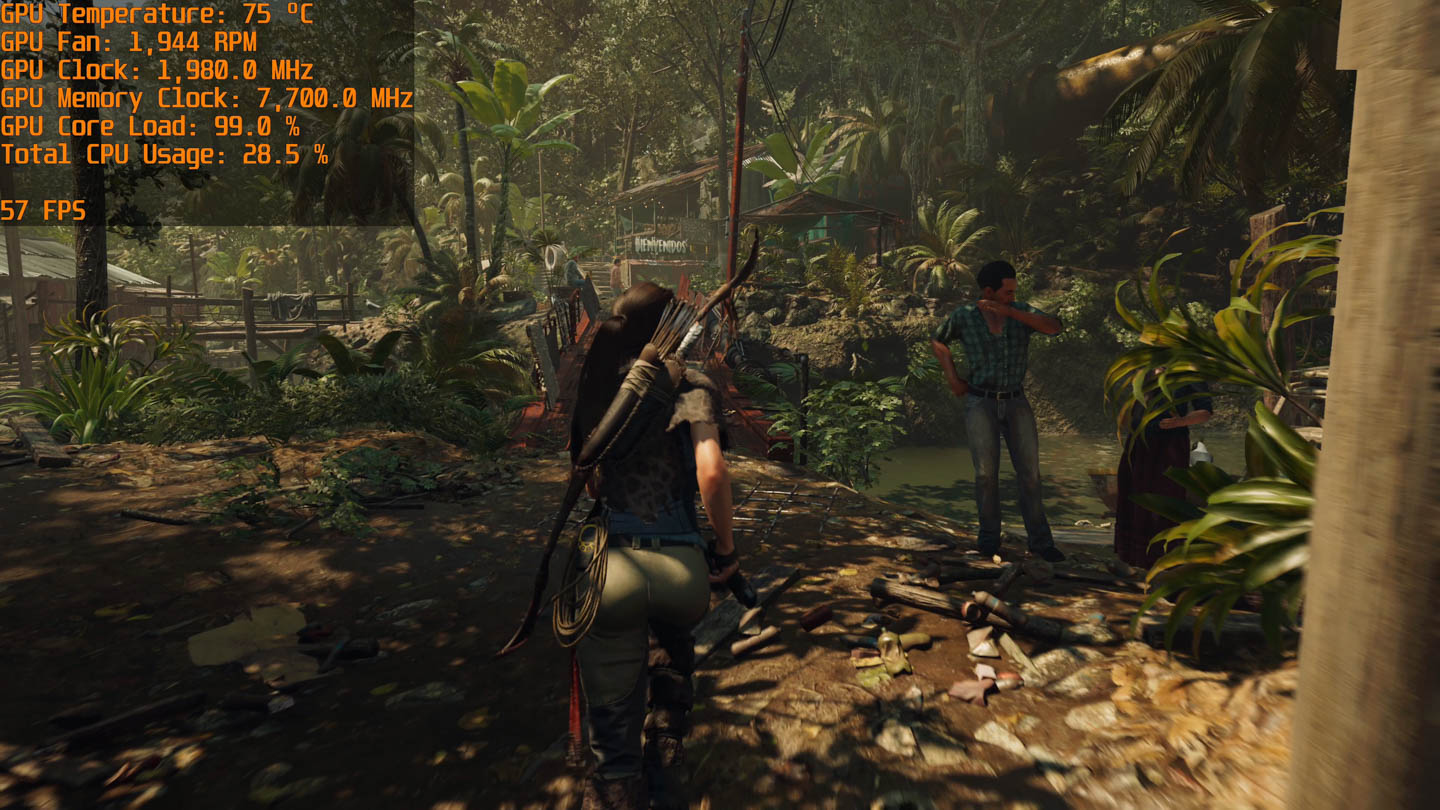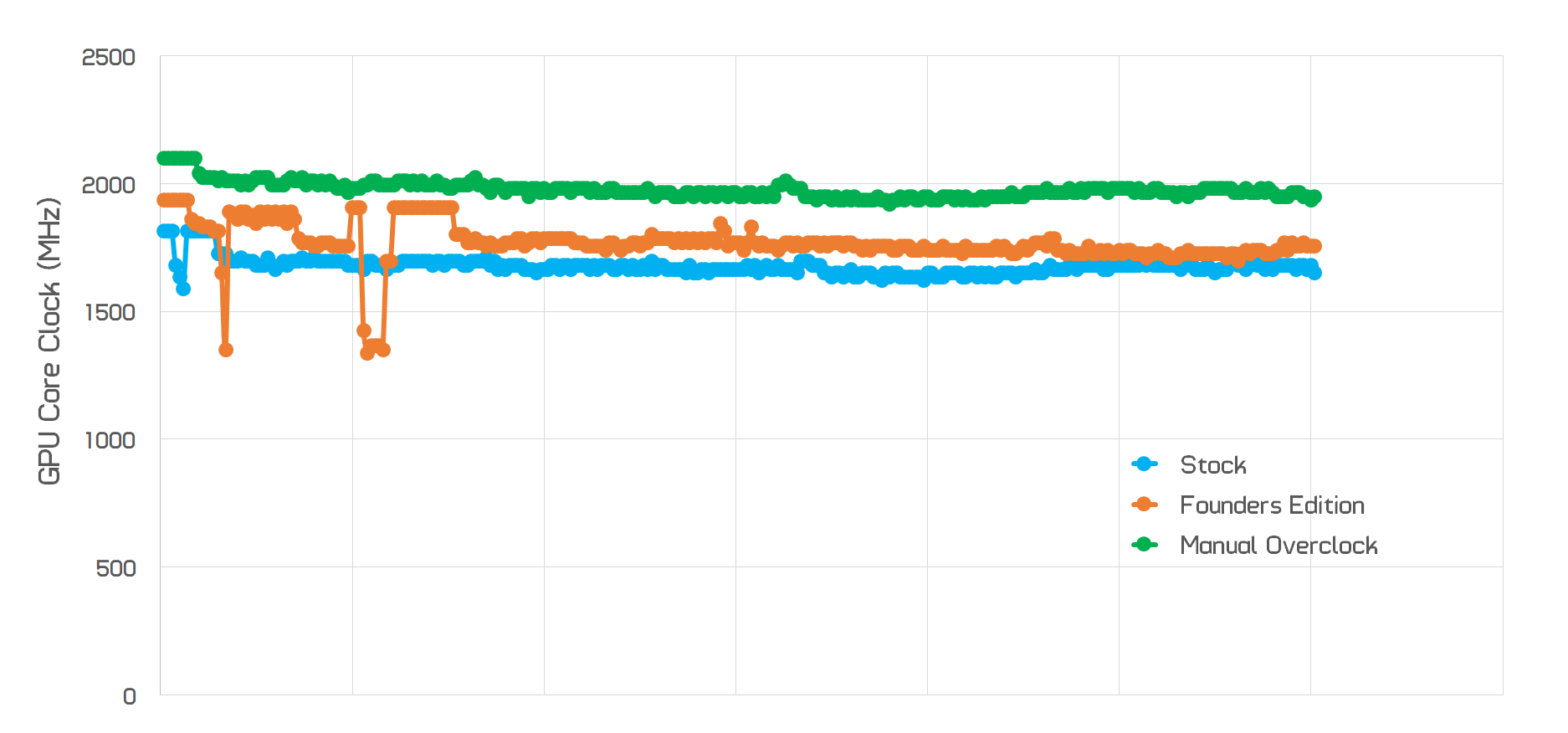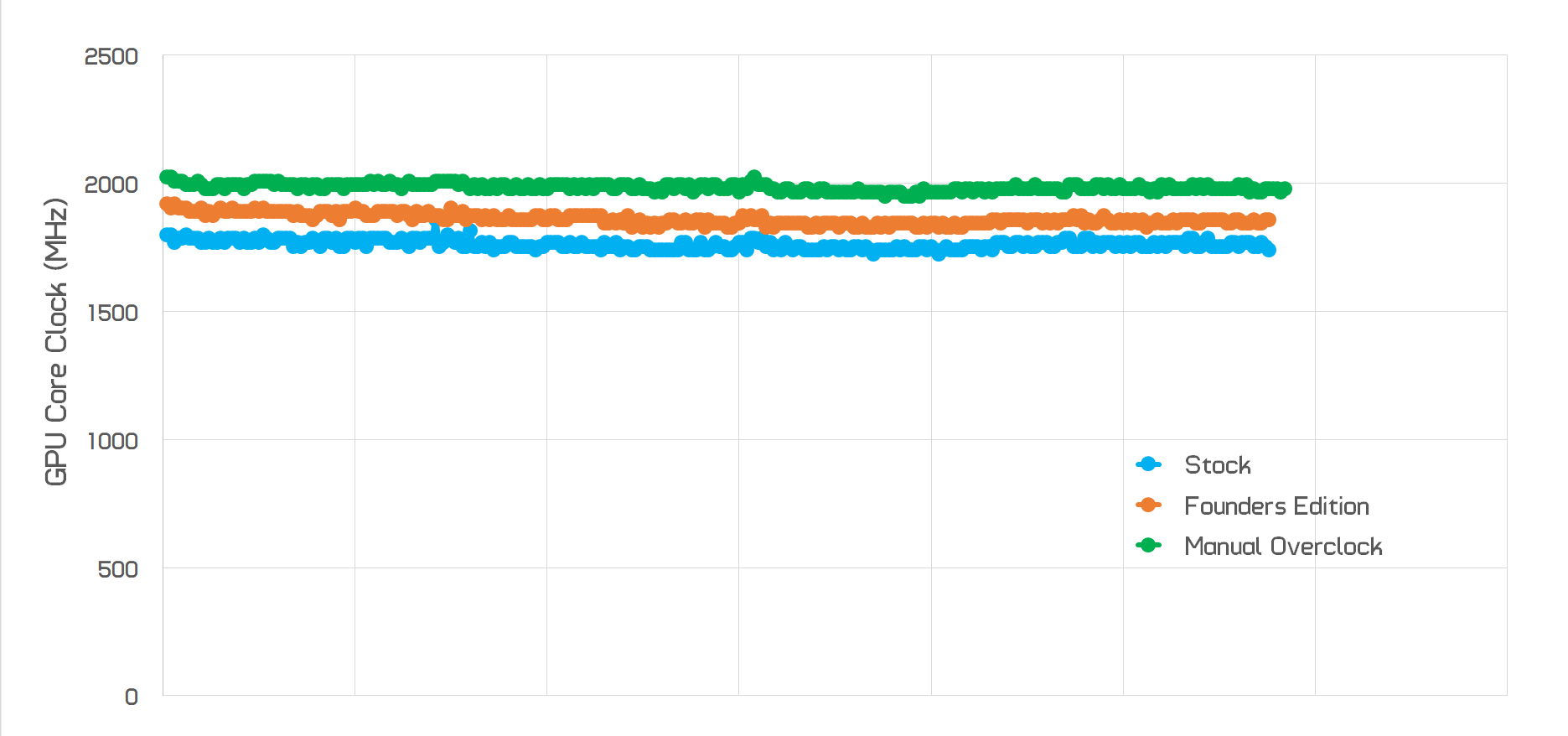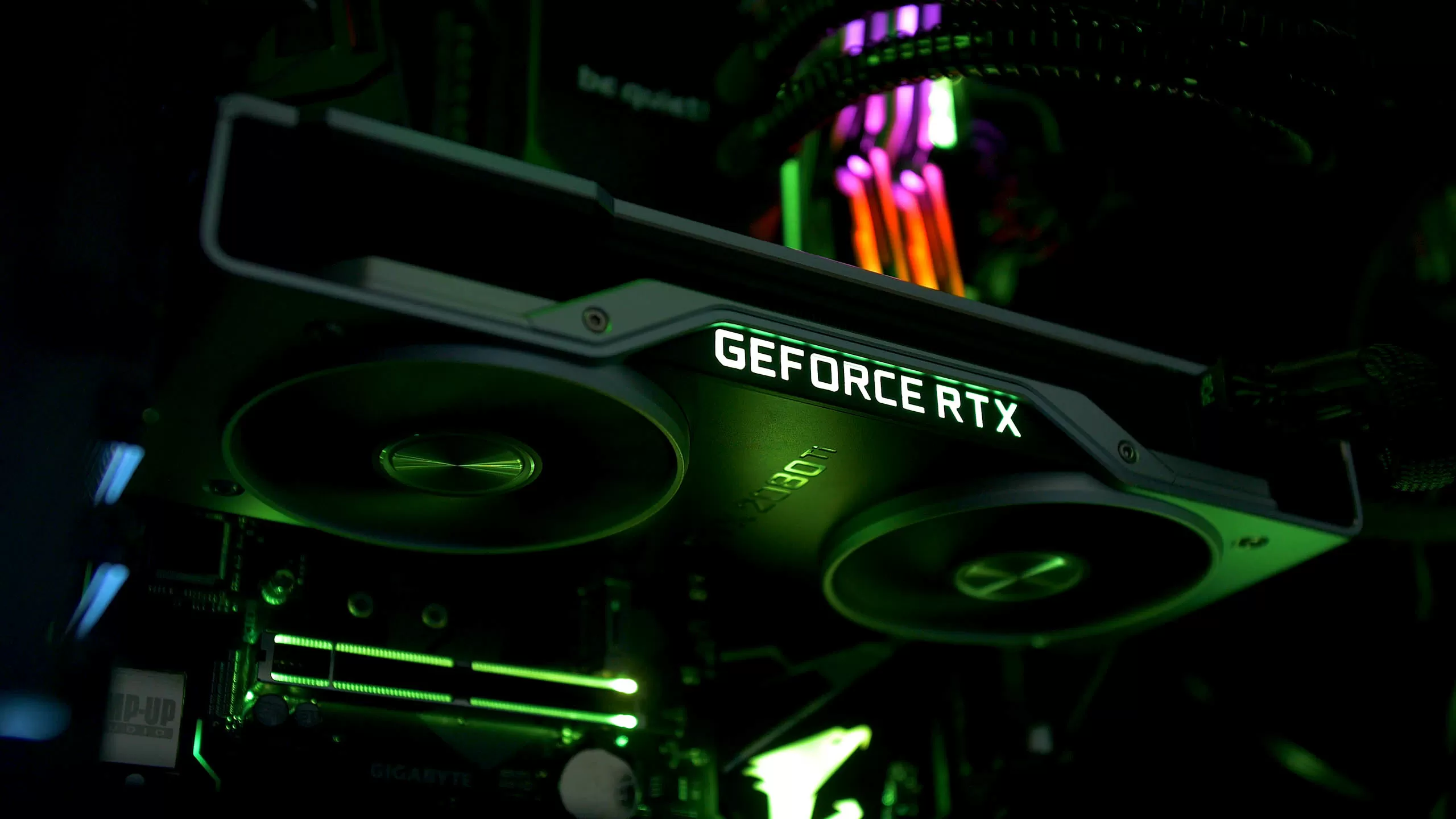Performance Results
Let's take a look at how overclocking improved the performance of the 2080 Ti and 2080, starting with a comparison of the Scanner API to our manual overclock.
For the 2080 Ti, the Scanner provided a 7% performance improvement over the FE clocks, whereas our manual overclock produced a 12% improvement. However the Scanner does not overclock the memory, and for those looking for a quick overclock procedure, one easy trick might be to use a fairly conservative memory overclock for simplicity's sake, something like +600 MHz.

Going with that changes the results and makes the Scanner + Memory overclock 11% faster than the FE clocks, but again the full manual overclock provides a slightly better result, a further 1.5 percentage points.

For the 2080, it was a similar story. The Scanner gave us a 4% performance improvement over the FE clocks, whereas our manual overclock boosted performance by 8%. Going with a Scanner + memory overclock provided 7% more performance than the FE clocks.
We've shown that our manual overclock is slightly superior to the results with the OC scanner, now let's take a look at a few more games to see how the overclock compares to both stock and Founders Edition performance.




From those five games, including Shadow of the Tomb Raider that we looked at earlier, for the 2080 Ti we achieved a performance improvement of 14% on average compared to the stock clocks, and 10% compared to the Founders Edition clocks. For the RTX 2080 those margins were a little narrower: 11% over stock clocks and 9% over Founders Edition.
We're pretty much running into a power limit here, looking at the design of the power delivery system on the FE cards there might be a bit more headroom available if Nvidia properly unlocked voltage controls, but this is as good as we're getting from what we can configure at the moment.
We should note that Nvidia do appear to be binning their 2080 Ti GPUs. Graphics cards shipped with stock clocks use one SKU, while those with factory OCs use a different, potentially binned SKU. This means that factory OC cards should overclock better than their non-OC alternatives.

In terms of temperatures and fan speeds, what Steve found in his initial review of the cards is spot on what I achieved on my test bench: core temperatures increase from 76C under load with the Founders Edition clocks, to 81C when overclocked, for both cards. That's a bit below the cards' native 84C temperature limit and well below the increased 88C limit, so it's pretty clear that's not a limiting factor for performance.
Fan speeds as well, 2060 RPM with the FE clocks, 2290 RPM when overclocked for the 2080 Ti and 2180 RPM for the 2080, using the default auto fan speed. So a slight increase there but no difference to the sound profile, the card is pretty quiet while overclocked. Also, both the noise output and temperatures will be different with board partner models.
And if you're wondering about power consumption? Well there wasn't a lot of difference in load power draw between the default and Founders Edition clocks, though that shouldn't be a huge surprise considering the FE clocks are only about 3% faster. But when overclocked, power draw increases by around 13 to 15% on average for both cards compared to what the FE clocks draw, so that's a typical result considering the performance improvements.
RTX 2080 Ti Clock Speeds

RTX 2080 Clock Speeds

If you're wondering about the actual clock speeds I achieved with the 2080 Ti, I was averaging around 1680 MHz in Shadow of the Tomb Raider with the stock clocks, 1770 MHz with the FE clocks, and 1980 MHz when overclocked, with a peak around 2100 MHz.
For the 2080, I was averaging around 1770 MHz with the stock clocks, 1865 MHz with the FE clocks, and 1990 MHz when overclocked, with a peak around 2010 MHz.
I also tried overclocking with the fan set to 100%, which dropped temperatures by 20C, and only got around 30 to 50 MHz more out of either card, and that was purely from GPU Boost; changing the clock offset resulted in instability. Running the fans at 100% resulted in less than a 1% boost to performance over our manual OC with the fans on auto, and of course, the card is much louder at 100% so it's not worth it. However, those who install liquid coolers on the card might be able to eek out a bit of extra performance, but not that much.

That wraps up our look into RTX 2080 Ti and RTX 2080 overclocking. With the cards we have on hand there is some extra performance to squeeze out and it'll be interesting to see if anything more can be gained from additional tweaks, particularly special mods to increase voltage.
For regular users though, around a 10% increase over FE cards is expected, with manual overclocking still being the go-to option, though Nvidia's Scanner API is quite handy for those that want to avoid manual tweaking.
